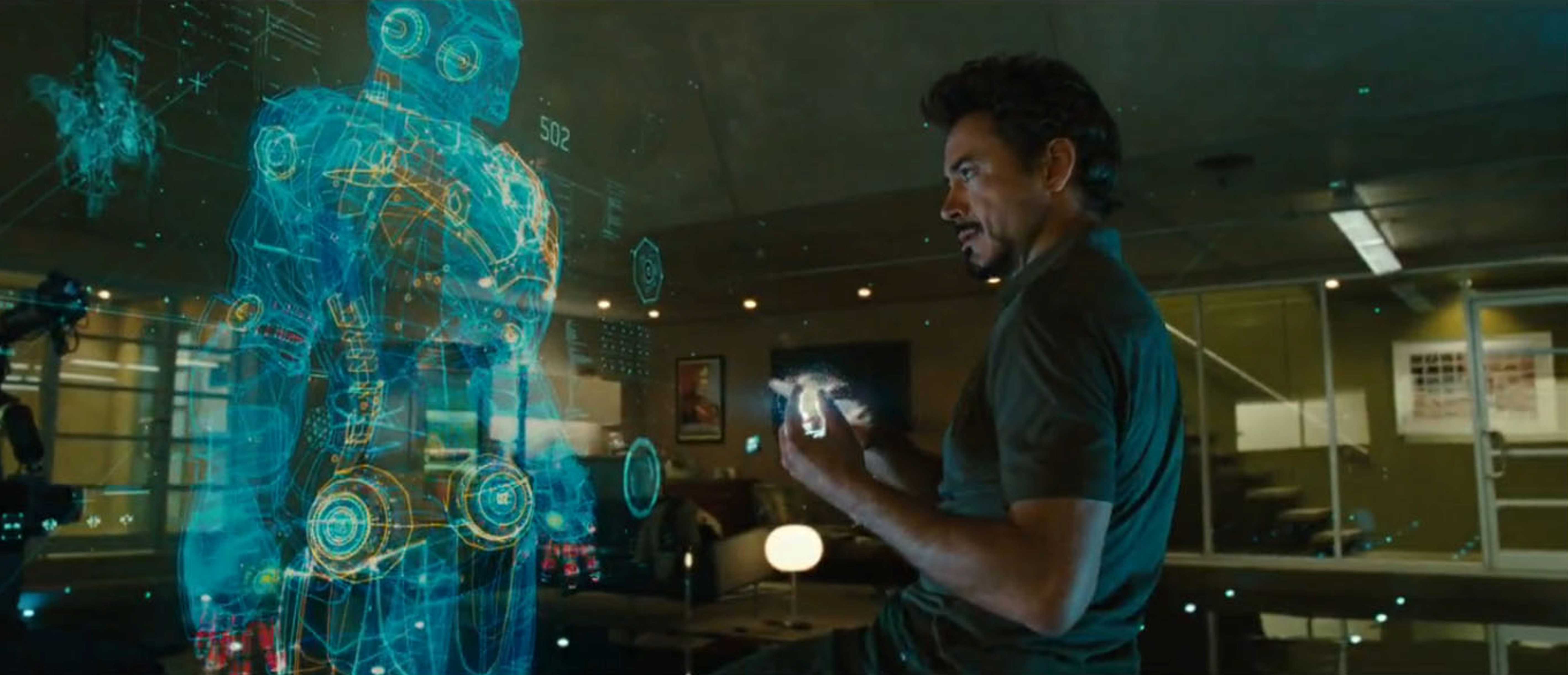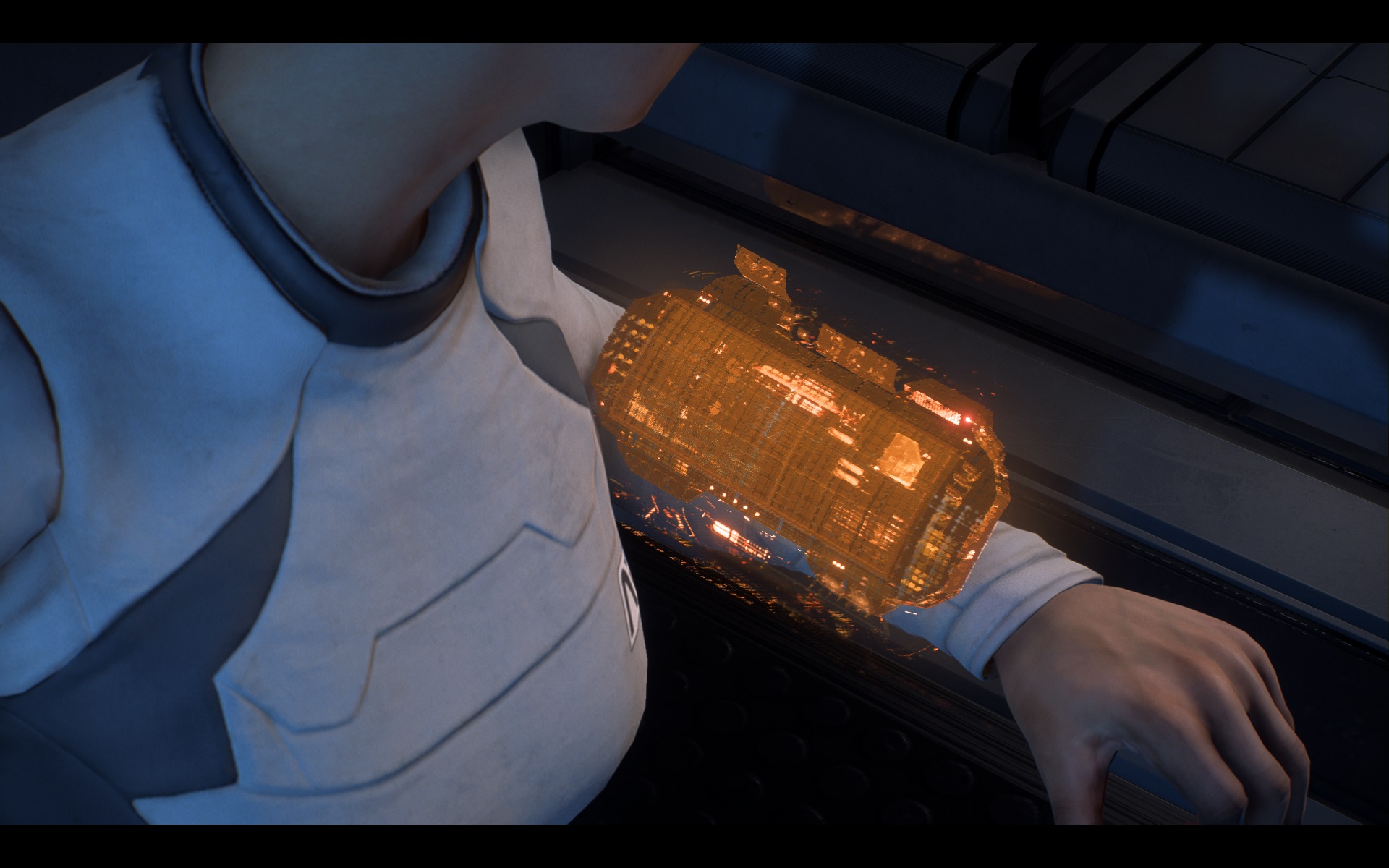
The Challenges
Display
We don’t have true 3D user interfaces right now, because the tech just isn’t there yet. It’s getting there, but we don’t have anything commercially ready for UI designers to obsess over. Holograms are getting better, and easier to produce. Motion input is also getting better and better, but it’s not as precise as we’d like it to be, yet. This is because holograms usually require multiple sources of light. The ones that don’t use reflective surfaces to simulate those sources. Both of these restrictions tend to work against the free form physical interactions people want out of a hologram. Basically, we’re waiting until we can form holograms from particles that are easier to manipulate. The closest we can get right now is VR. But, well, it’s virtual. It’s a simulation of a 3D interface on a pair of flat screens. So it only half counts. That said, VR will probably end up being our 3D UI mockup tool of the future.Input
Okay, everybody watched Tony Stark in the Iron Man movies wave his hands around and yell at Jarvis to do stuff, and it looks awesome. The only problem is that waving your arms around like that for long periods is actually really tiring. Ask any actor who has to pretend to interact with these systems. It’s not practical for long work sessions. The part that the movies got right was the inclusion of voice input. Sure, we don’t have AIs yet, but voice commands are coming along. Any interface that would otherwise require us to stand and reach across the table is going to get a lot of use out of voice commands. People don’t even use really big touch screens if they don’t have to. Small ones, yes. Big ones only get used if they’re lying at a semi-horizontal angle for drawing purposes.Organization of Information and Buttons
Technical diagrams and blueprints may look great in 3D. Maybe even movies, too, one day. However, plain old two-dimensional text is still one of the most efficient ways of conveying a lot of information. It’s cognitively efficient, and byte efficient. We may develop a 3D language one day, but as of now, text looks best on a 2D plane. Look at VR. Look at the menus in apps and games. They’re all represented on 2D planes. So are most of our buttons. I mean, I don’t want to walk across the room to press a button either.My Predictions
The mouse is still the most precise input tool we have, for now. The keyboard is still the fastest way to input text with minimal editing required. I don’t think they’re just going away. In fact, a sort of 3D mouse that turns small movements of the hand into a cursor that moves about the larger 3D interface might make more sense than stretching your arms the whole width of your projector-screen-thing to manipulate information. Those sorts of peripherals would also get us around the problems that prevent us from taking a literally hands-on approach, such as light emitters, reflective surfaces, and so on. The actual visual part of the UI might look something like the one featured in Iron Man, but with more context for the information presented. In the Iron Man examples, all information being presented to the user is brought to the fore by Jarvis, on request. It’s also organized with lots of (completely transparent) white space, with a noticeable lack of a window metaphor. Without Jarvis, we’ll need a more deliberate way to contextualize everything we see in a UI.
For 2D information, the window concept might very well remain in play. For information displayed in three dimensions, it might simply become a “box” metaphor, with translucent lines showing where one 3D app ends, and where the next one begins. Input will have to be contextual, with the cursor constrained to two dimensions when editing text, and freed up under other circumstances.
Going beyond anything possible with today’s tech, another good example of a practical holographic interface is the Omni-tool from the Mass Effect franchise. Goodness knows how they get the holograms to work when the device is implanted into you (usually in the non-dominant wrist, like a watch), but let’s ignore the science for a bit.
In the Iron Man examples, all information being presented to the user is brought to the fore by Jarvis, on request. It’s also organized with lots of (completely transparent) white space, with a noticeable lack of a window metaphor. Without Jarvis, we’ll need a more deliberate way to contextualize everything we see in a UI.
For 2D information, the window concept might very well remain in play. For information displayed in three dimensions, it might simply become a “box” metaphor, with translucent lines showing where one 3D app ends, and where the next one begins. Input will have to be contextual, with the cursor constrained to two dimensions when editing text, and freed up under other circumstances.
Going beyond anything possible with today’s tech, another good example of a practical holographic interface is the Omni-tool from the Mass Effect franchise. Goodness knows how they get the holograms to work when the device is implanted into you (usually in the non-dominant wrist, like a watch), but let’s ignore the science for a bit.
 The Omni-tool is a purely practical device, used for communications, data analysis, and interacting with unfamiliar hardware. Oh, and stabbing people. Look, we’re ignoring the science!
The point is, it’s a practical interface because the UI is entirely contextual, and adapts to whatever it is you’re doing. It’s also operated with the fingers of one hand. No huge gestures required. Note that every other UI in the Mass Effect universe is either on a flat surface, or activated by voice.
The Omni-tool is a purely practical device, used for communications, data analysis, and interacting with unfamiliar hardware. Oh, and stabbing people. Look, we’re ignoring the science!
The point is, it’s a practical interface because the UI is entirely contextual, and adapts to whatever it is you’re doing. It’s also operated with the fingers of one hand. No huge gestures required. Note that every other UI in the Mass Effect universe is either on a flat surface, or activated by voice.
Conclusion
Hollywood artists like to envision a world of completely unusable interfaces. Real 3D UIs will probably look more familiar than most of us seem to want to believe. And I haven’t even touched on accessibility. How do people who can’t speak, or easily move their arms due to arthritis, interact with a huge holo-table UI? What if multiple people try to interact with it at once? These are the kinds of questions we’ll have to answer before we embrace arm-waving as the future.Ezequiel Bruni
Ezequiel Bruni is a web/UX designer, blogger, and aspiring photographer living in Mexico. When he’s not up to his finely-chiselled ears in wire-frames and front-end code, or ranting about the same, he indulges in beer, pizza, fantasy novels, and stand-up comedy.
Read Next
15 Best New Fonts, July 2024
Welcome to our monthly roundup of the best fonts we’ve found online in the last four weeks. This month, there are fewer…
By Ben Moss
20 Best New Websites, July 2024
Welcome to July’s round up of websites to inspire you. This month’s collection ranges from the most stripped-back…
Top 7 WordPress Plugins for 2024: Enhance Your Site's Performance
WordPress is a hands-down favorite of website designers and developers. Renowned for its flexibility and ease of use,…
By WDD Staff
Exciting New Tools for Designers, July 2024
Welcome to this July’s collection of tools, gathered from around the web over the past month. We hope you’ll find…
3 Essential Design Trends, July 2024
Add some summer sizzle to your design projects with trendy website elements. Learn what's trending and how to use these…
15 Best New Fonts, June 2024
Welcome to our roundup of the best new fonts we’ve found online in the last month. This month, there are notably fewer…
By Ben Moss
20 Best New Websites, June 2024
Arranging content in an easily accessible way is the backbone of any user-friendly website. A good website will present…
Exciting New Tools for Designers, June 2024
In this month’s roundup of the best tools for web designers and developers, we’ll explore a range of new and noteworthy…
3 Essential Design Trends, June 2024
Summer is off to a fun start with some highly dramatic website design trends showing up in projects. Let's dive in!
15 Best New Fonts, May 2024
In this month’s edition, there are lots of historically-inspired typefaces, more of the growing trend for French…
By Ben Moss
How to Reduce The Carbon Footprint of Your Website
On average, a web page produces 4.61 grams of CO2 for every page view; for whole sites, that amounts to hundreds of KG…
By Simon Sterne
20 Best New Websites, May 2024
Welcome to May’s compilation of the best sites on the web. This month we’re focused on color for younger humans,…














